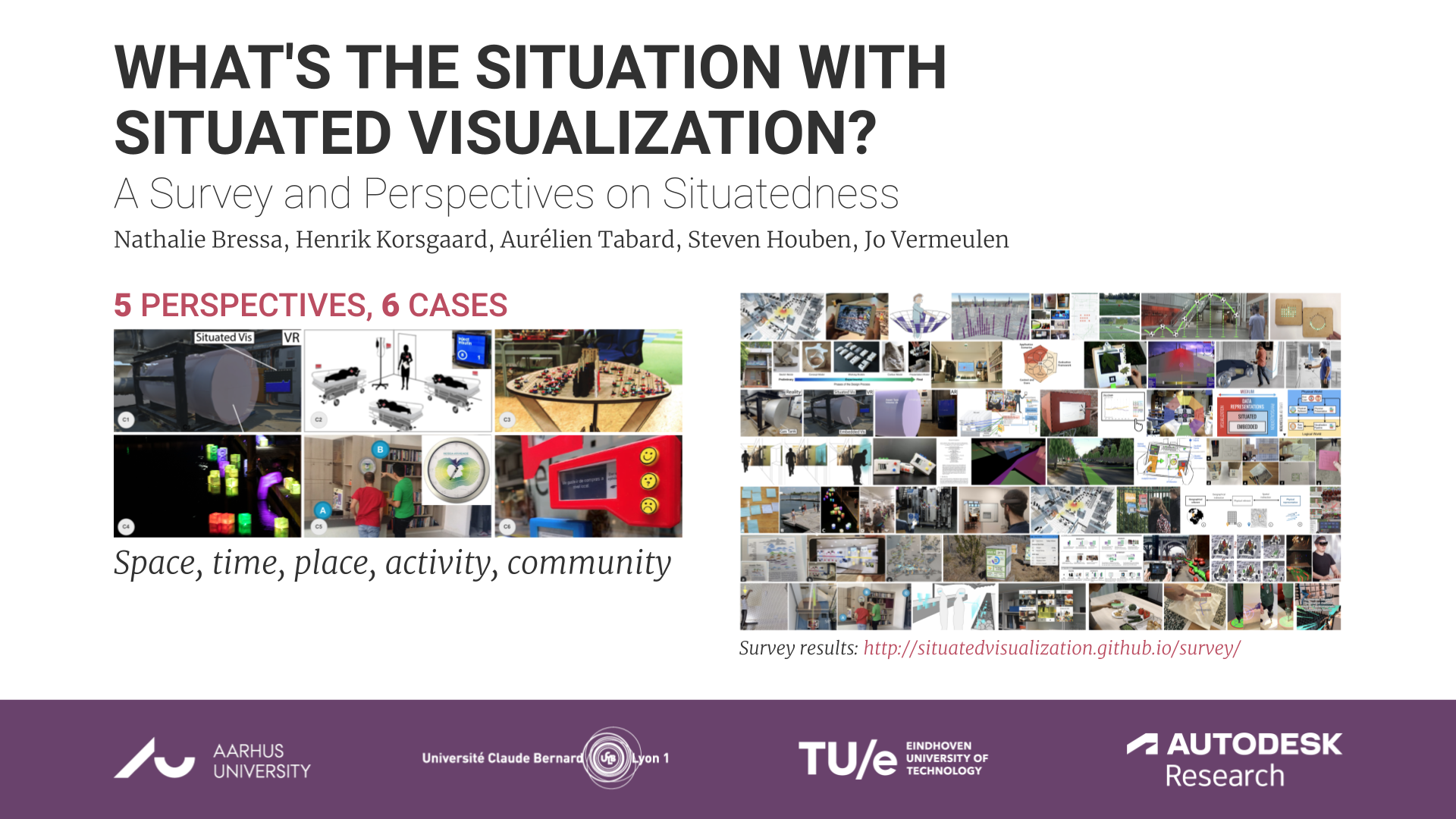What's the Situation with Situated Visualization? A Survey and Perspectives on Situatedness
Nathalie Bressa, Henrik Korsgaard, Aurélien Tabard, Steven Houben, Jo Vermeulen
External link (DOI)
View presentation:2021-10-27T17:30:00ZGMT-0600Change your timezone on the schedule page
2021-10-27T17:30:00Z

Fast forward
Direct link to video on YouTube: https://youtu.be/fzHGkDlVKdc
Abstract
Situated visualization is an emerging concept within information visualization, in which data is visualized in situ, where it is relevant to people. The concept has gained interest from multiple research communities, including information visualization, human-computer interaction and augmented reality. This has led to a range of explorations and applications of the concept, however, this early work has focused on the operational aspect of situatedness leading to inconsistent adoption of the concept and terminology. First, we contribute a literature survey in which we analyze 40 papers that explicitly use the term "situated visualization" to provide an overview of the research area, how it defines situated visualization, common application areas and technology used, as well as type of data and type of visualizations. Our survey shows that research on situated visualization has focused on technology-centric approaches that forefront a spatial understanding of situatedness. Secondly, we contribute five perspectives on situatedness (space, time, place, activity, and community) that expand on the prevalent notion of situatedness in the corpus. We draw from six case studies and prior theoretical developments in HCI. Each perspective develops a generative way of looking at and working with situatedness in design and research. We outline future directions, including considering technology, material and aesthetics, leveraging the perspectives for design, and methods for stronger engagement with target audiences. We conclude with opportunities to consolidate situated visualization research.